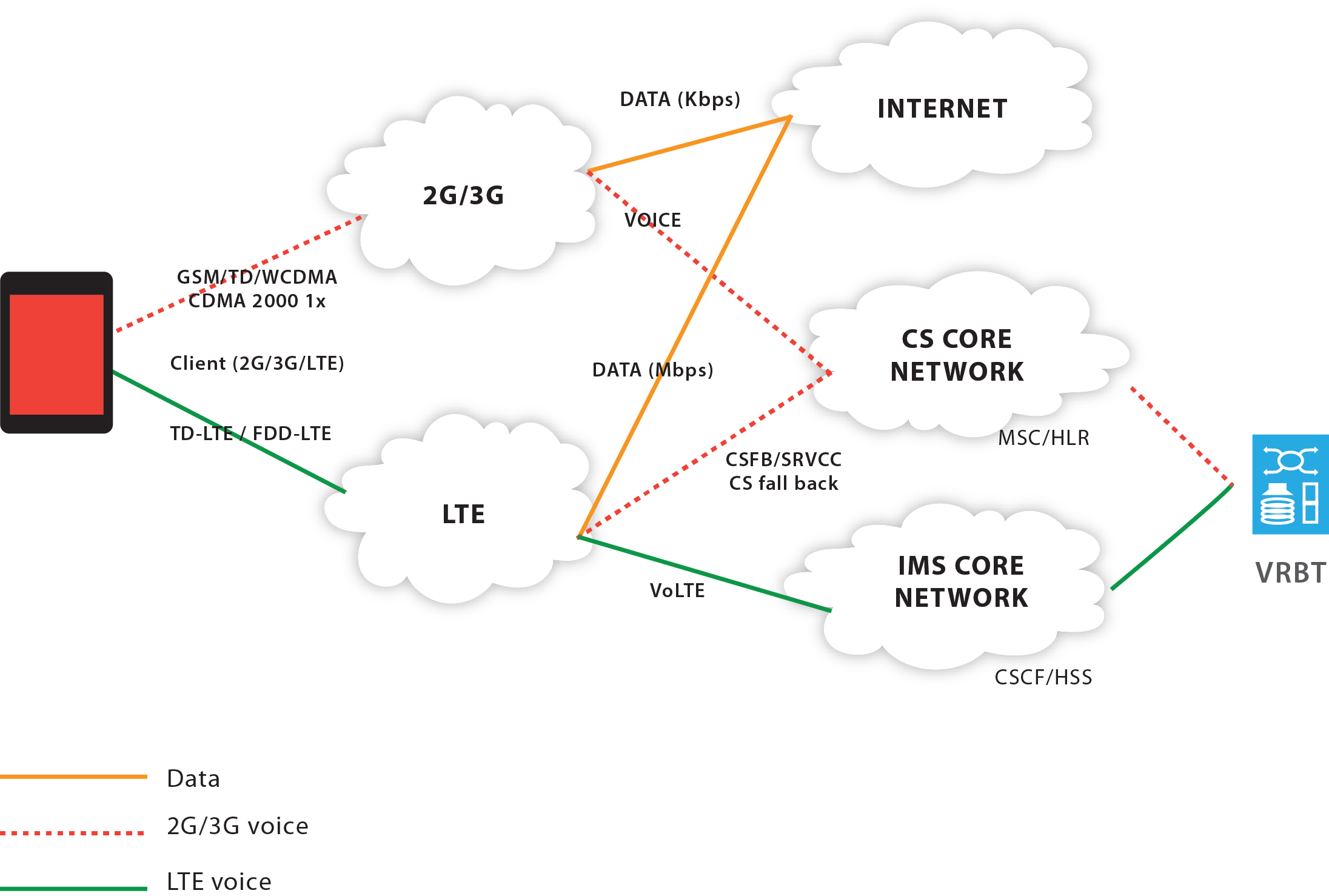Evolution in communication network technologies, the proliferation of affordable smart phones/tablets, and the popularity of Over-The -Top (OTT) communication services have driven fundamental changes in consumers’ data and content consumption behavior virtually everywhere. Rich media communication services, once niche or novelty, have fast become must-haves across businesses and general consumers alike.
In response to changing market dynamics and to counter the encroachment by OTTs onto their core revenue sources, telcos are resorting to the deployment of IP multimedia Subsystem (IMS) as an essential infrastructure on their 4G LTE network to facilitate the creation of novel multimedia services, as well as to support interoperability and network convergence. IMS allows network operators to maintain market leadership and continue to play a central role in the deployment of new revenue-generating multimedia services over a VoLTE, all-IP infrastructure, thereby alleviating the dangers of telcos becoming mere “bit pipes” to OTTs.
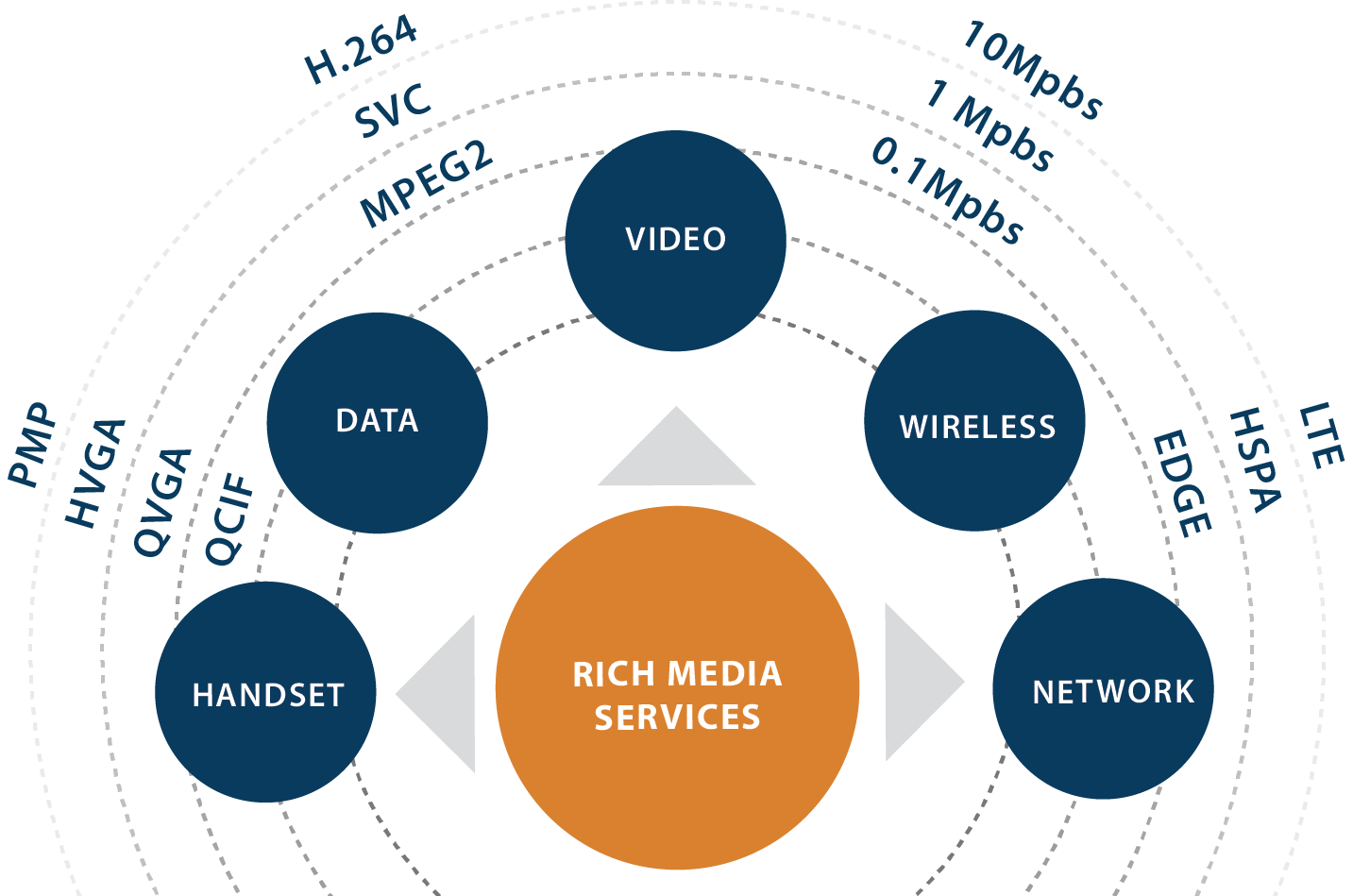

The IMS-based WiseSpot Session Initiation Protocol (SIP) Application Server is a SIP (RFC 3261 Standard) compliant Registrar and Proxy Server Module that aims to help operators create advanced multimedia telephony services on various IP based networks, such as a LTE/IMS core network via IMS Service Control (ISC) interface and a next-generation network via standard SIP interface or customized SIP interface.
It is capable of accommodating multiple applications on the same platform, thereby allowing rapid deployment over an IMS core of both traditional and next-generation revenue services including:
- HD Ringback Tone
- Video Ringback Tone
- "Block the blocker" / Call Filtering
- Voice Mail / Visual Voice Mail
- Mobile Centrex
- Group Call Services
- Moblie Call Recording
- SIP Interactive Voice Response System (IVRS)
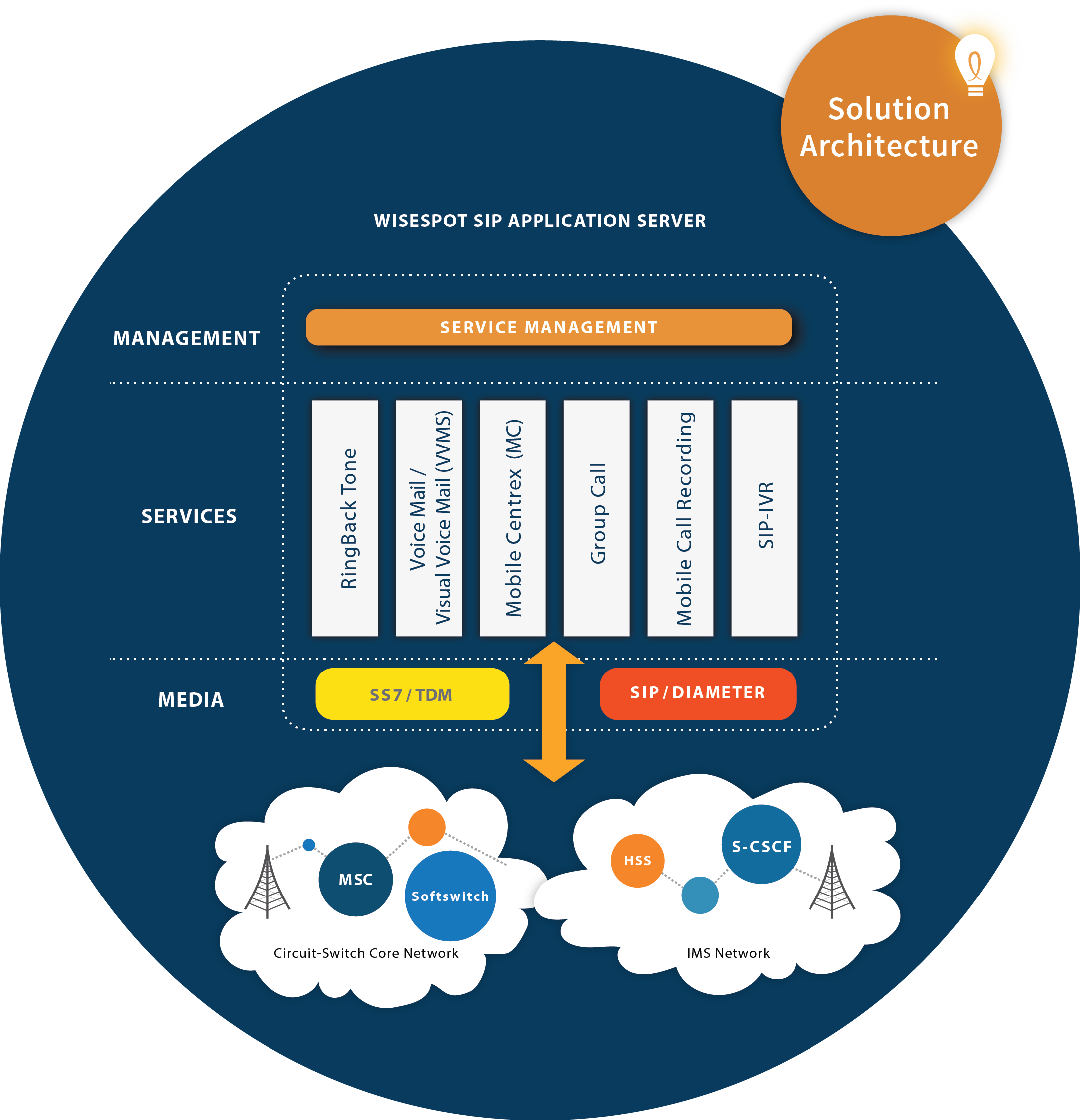
KEY ADVANTAGES
Field-proven & Ready-to-deploy
Saves cost if replacing legacy Time-Division Multiplexing (TDM) & SS7 equipment
• No need for further investment in costly TI/EI voice trunks, TDM card TI/EI and SS7 interfaces
• Supports multiple services on one single platform. Saves operating expenditure (OPEX) of existing services and capital expenditure (CAPEX) of new services
Flexible & scalable: additional capacity through additional SIP software licenses instead of requiring the purchase of TI/EI ports and interface cards
Supports all modern audio codec for HD voice quality. Also supports media streams over Network Address Translation (NAT) Traversal
Proven interoperability with 3rd party IMS systems, including Huawei, ZTE, Nokia (NSN, Alcatel-Lucent) and Ericsson
Customizable to meet unique service & business operational needs.
E.g. Accounting/CDR, Provisioning API, Prepaid API and more
Supports multiple domain hosting
MAJOR FUNCTIONS & FEATURES
Protocol & Standards
• Supports industry-standard SIP, IMS SIP and customized SIP protocol, and can co-exist with legacy circuit switch telephony protocols such as SS7 and SIGTRAN
• Supports NAT Traversal
• Supports IPv6
• Supports Transmission Control Protocol (TCP) transport
Load Balancing
• Loading balancing and failure detection to trigger routing to alternative servers
• SIP Back-To-Back User Agents (B2BUA) that interoperates with the telco network to manage SIP Message Routing and Network-SIP Application Server (AS) Interworking
Call & IP Media Control
• Routing of SIP requests from a SIP User Agent (UA) or other server to the most appropriate SIP-Uniform Resource Identifier (URI) address based on its registrar database and dial plan
• Supports various SIP call flows, SIP header manipulations and customized SIP headers
• Supports setting of customizable call flows to increase compatibility between SIP-compliant products and to provide additional options for complex call routing
• Performs IP media control based on the SIP control signal, media resource management, Dual Tone Multi Frequency (DTMF) handling, QoS alarms and LAN failure detection
SIP Registration (Optional)
• Registrar Service for SIP UA to register “bindings”, which are associations between the media endpoint alias and its real (transport) address
SIP Digest Authentication (Optional)
• Allows a remote endpoint (a User Agent Server, or UAS) to verify the identity of a User Agent Client (UAC) that has sent a request to the UAS. “Digest Authentication” refers to the encryption method used for secure transmission of the user’s secret password in the message
Security Features
• Allows definition of filter policy and block policy against malicious activities
Session Management
• Allows real time session management functionality, such as viewing and terminating active calls
Monitoring & Diagnostics
• Provides real time IP call monitoring tools, SIP trace logs for troubleshooting and temporary porting of miror SIP traffic to dedicated services for advanced troubleshooting
• Supports NAT Traversal
• Supports IPv6
• Supports Transmission Control Protocol (TCP) transport
Deployment Scenario : Planning & Considerations for Video RingBack Tone
Video RBT Planning in LTE
1 LTE BRINGS FAST, EFFICIENT & INTELLIGENT VIDEO SERVICE
• Compared to circuit-switched technology used in 3G networks, IP- based packet communication on 4G/LTE networks is more susceptible to delay and echo HD audio and video codec processing
• HD audio and video codec processing
High Quality RBT
Codec: AMR-WB
Bit rate: 192kbps or above;
Superior HD sound quality;
Adaptive bit rate according to specific network situation
Normal RBT
8k8bit wav 64kbps
Song and musical instruments sound not that clear;
The quality will be worse in 2G/3G network after compressed to 12kbps
2 ROBUST PLATFORM
• Network connection: Provides services across various standards and networks
• Content adaptive: Flexible play formats and conversion
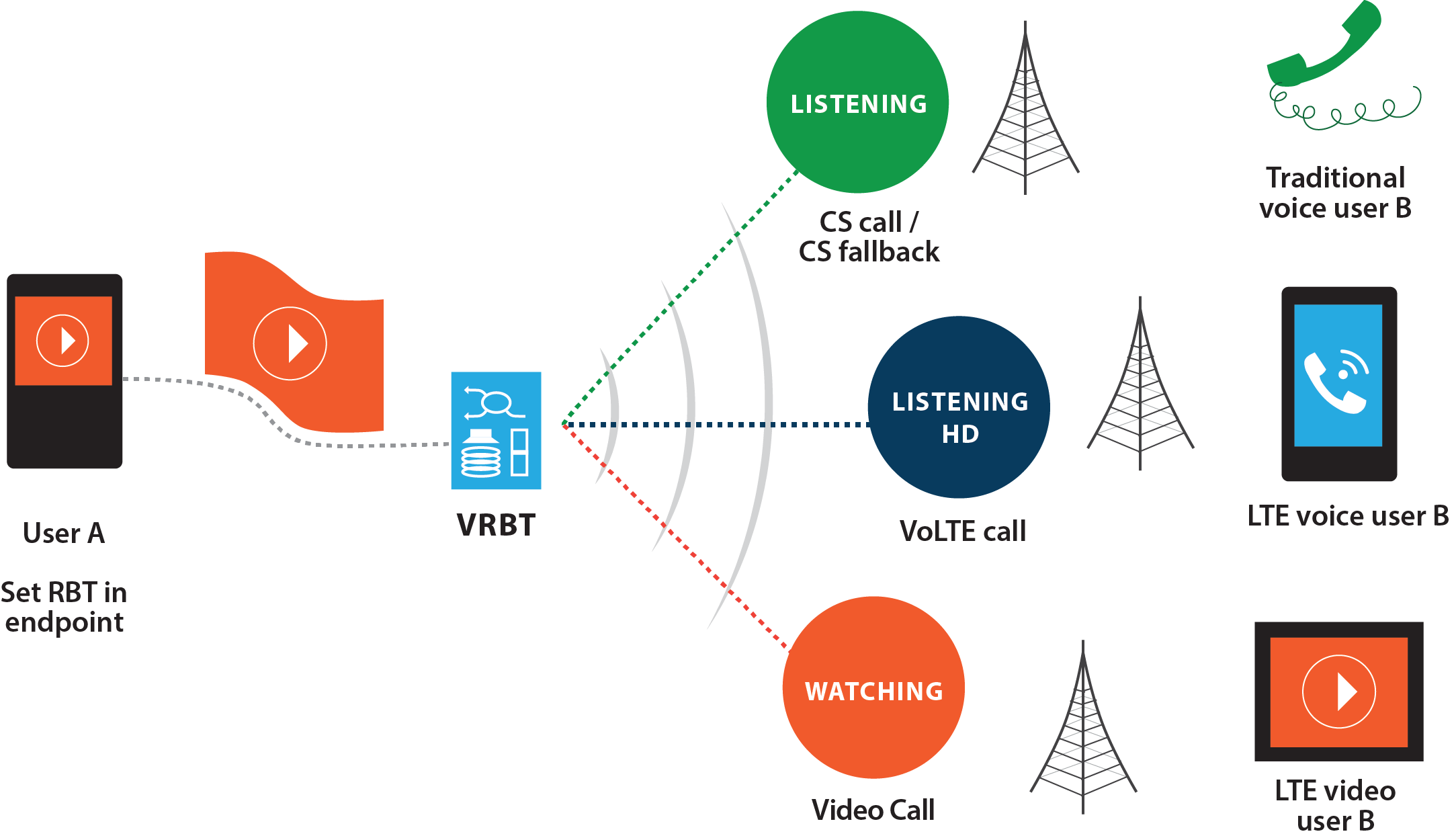
Video RBT Data Flow Sample
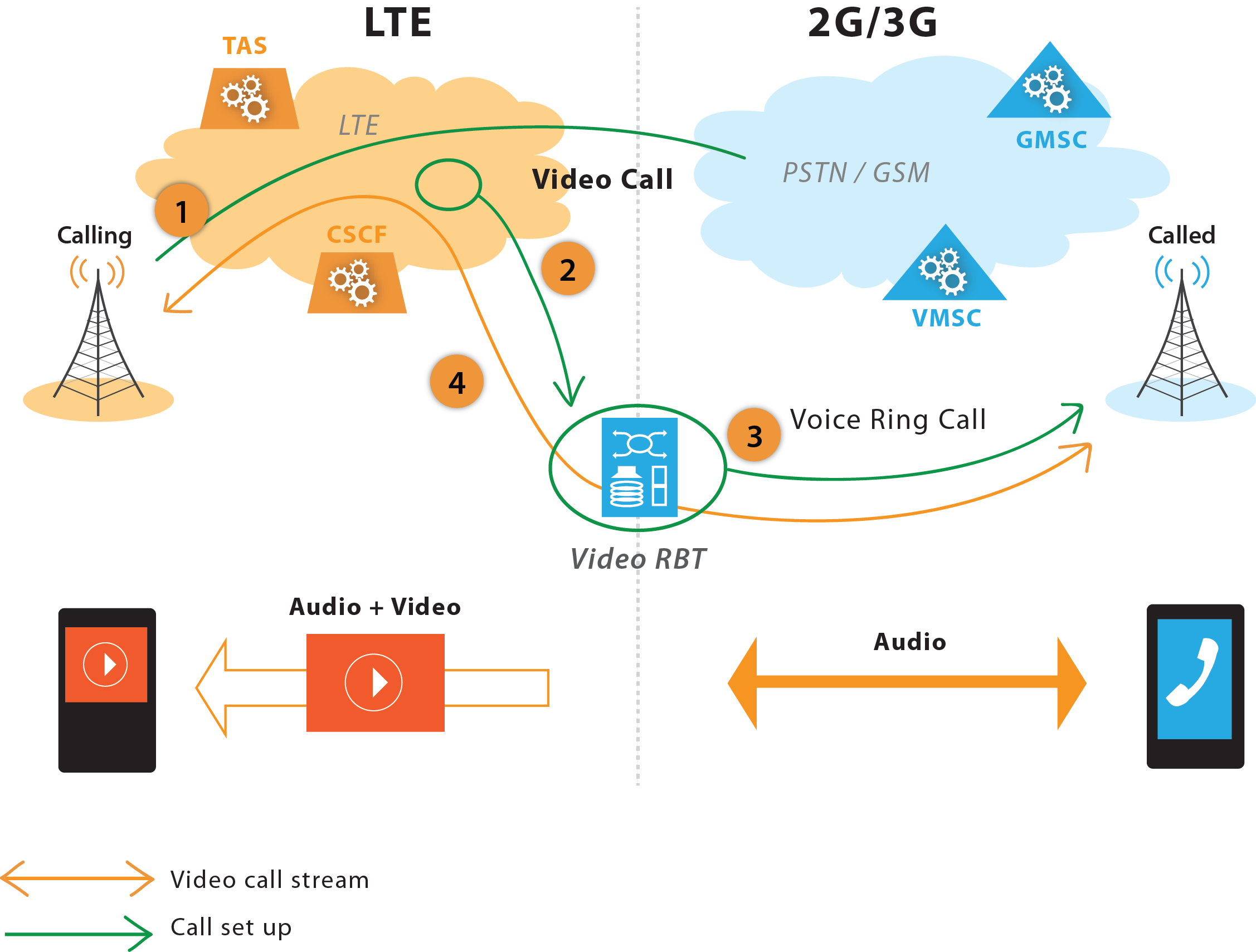
Video RBT Planning and Consideration for Platform Integration
• Centralized platform: Easy for operator to manage different settings for different services
• Automatic adaptation for different kinds of calling scenarios
• Flexible to allow for choosing from a selection of different media resource files to play
• Allows introduction of new services with a speedy time to market, thus keeping customers satisfied
• Control call/video delay and provide better access speed
• Efficient Content Management to manage system resource usage
• Effective coordination among existing core network or deployed RBT systems.
For example, if VRBT system can be used in 2G/3G/4G networks; if VRBT system can be utilized with existing deployed 2G/3G RBT system
